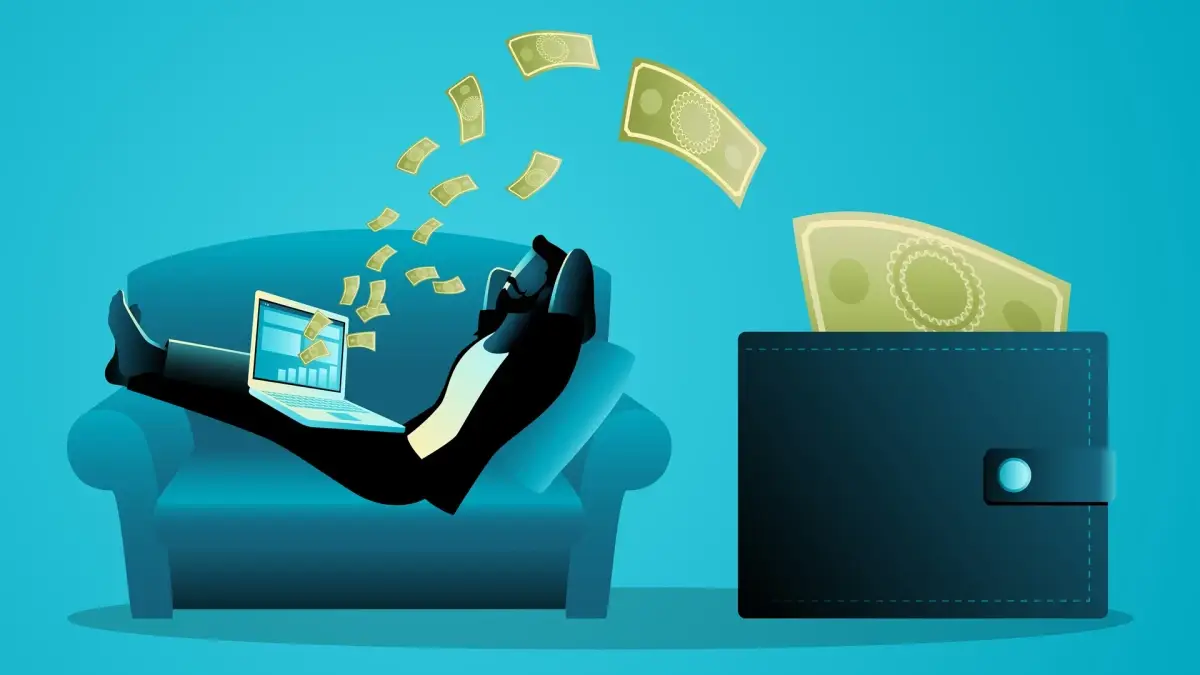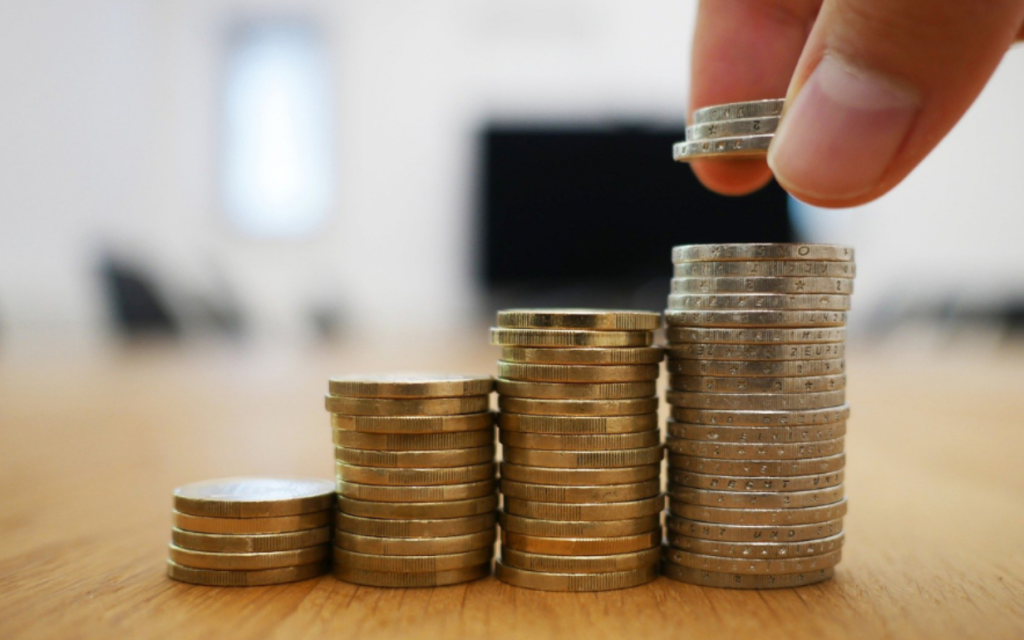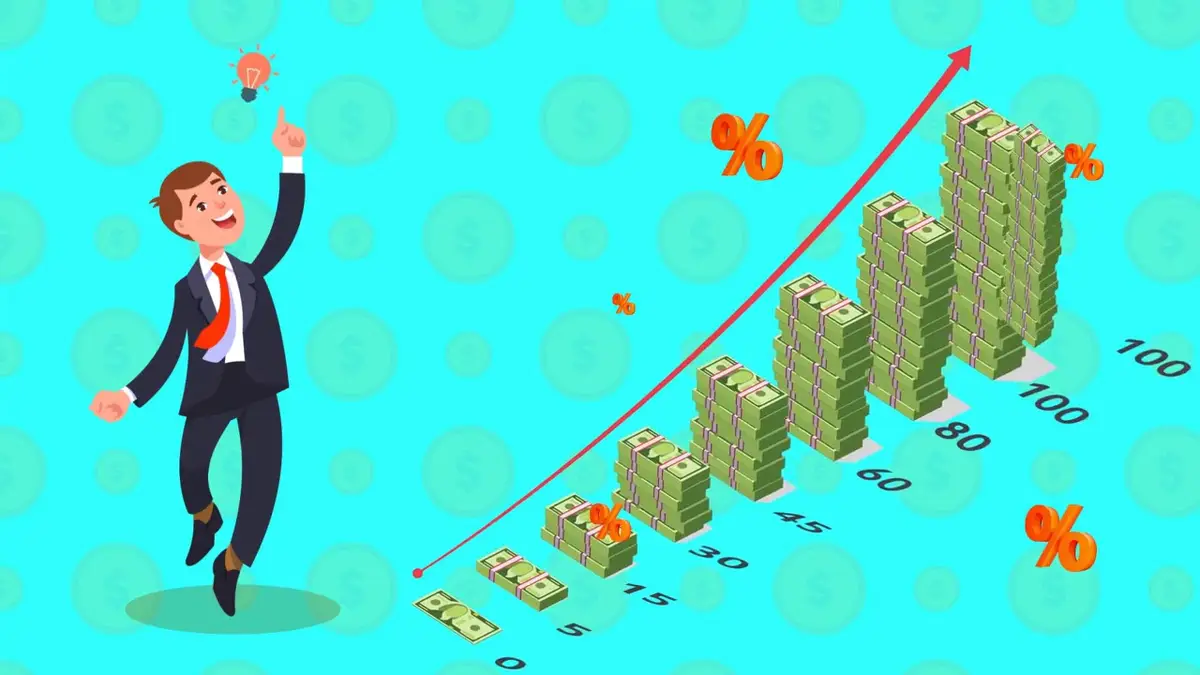Today, many dream of financial freedom, which allows working less and living brighter. This is where passive income comes to the rescue – money that comes to you without your constant active participation. Imagine: your savings continue to grow while you travel, pursue your favorite activities, or simply relax. Sounds tempting, doesn’t it?
This article is your first step towards achieving this goal. We have prepared a guide that will help you understand how to create passive income. Get ready to learn how to lay the foundation for your financial future.

How to Create Passive Income: Key Sources to Earn Without Constant Participation
Defining your financial goal starts with a basic equation: target passive income per month × 12 / expected return = required capital. For example, if you want to receive 40,000 rubles monthly and use a tool with an 8% annual return (after taxes), the initial amount will be: 40,000 × 12 / 0.08 = 6,000,000 rubles. The calculation is adjusted considering currency, tax rate, currency hedging, and inflation pressure. The CPI indicator helps plan real returns for 5-10 years ahead.
Main Sources of Passive Income: From Deposits to Rent
Building a financial foundation starts with choosing the right tool. The guide on how to create passive income covers a list of reliable and proven solutions:
- Bank deposit – minimal risks but limited returns. Rates range from 7% to 10% per year (depending on the bank and amount). For example, a deposit of 2 million rubles brings in about 13,500 rubles per month.
- Federal loan bonds (OFZ) – fixed coupon, regular payments, possibility of early sale. Provides predictability, especially with long series.
- Stocks with dividends – equity participation with annual profit distribution. For example, Surgutneftegas or LUKOIL can yield up to 12% with stable dividends.
- Income-generating real estate – renting residential or commercial properties. Renting a studio in Moscow or St. Petersburg yields 25,000-40,000 rubles per month after taxes and expenses.
- Crowdlending and P2P lending – providing loans to individuals through platforms. High returns up to 20% but require strict risk assessment and default management.
- Securities of funds (ETFs, REITs) – diversification and liquidity. Great for beginners. Through the “FinEx” tool, you can invest in the S&P 500 index, earning from growth and dividends.
- Copyrights and royalties – income from content, books, courses, music. Suitable when you have creative capital and rights to intellectual property.
Guide for Beginners: How to Create Passive Income Without Starting Capital
Intellect, skills, and time turn into assets. How to create passive income if you don’t have money to invest anywhere? Here are three accessible directions:
- Infoproducts and courses. Developing a course on a platform like GetCourse or Udemy turns knowledge into an asset. For example, an Excel course sells automatically, bringing in 5,000 to 50,000 rubles per month.
- YouTube channel or Telegram bot. After achieving monetization, advertising generates income streams. A channel with 10,000 subscribers generates 10,000-30,000 rubles per month.
- Referral programs and affiliate networks. Participation in CPA networks provides profit for referred clients. Even 20 active partners can ensure a stable income of 15,000-40,000 rubles per month.
Savings and Capitalization Tools: Deposit, Investment, Interest
For novice investors, the approach with minimal risks involves banking products. The guide on how to create passive income focuses on:
- Deposit with interest capitalization. At a 9% rate and monthly capitalization, a 1 million ruble deposit will yield around 2.37 million rubles in 10 years (considering compound interest).
- Savings accounts. Flexible conditions and instant access. Suitable for emergency funds and quick reinvestment.
- Currency instruments. In dollars – through Eurobonds or deposits with protection against devaluation. A convenient option for diversification.
Risks and Expectations: How to Avoid Problems
Passive income carries risks – primarily inflationary, currency, and market risks. The main threats are:
- Inflation. With a 7% annual growth, purchasing power almost halves in 10 years. Assets with growth above CPI provide coverage.
- Real estate. Tenant loss, price drops, property taxes – all reduce profitability. Additional protection includes loss insurance (products like “RESO” and “Ingosstrakh”).
- Financial pyramids. Yields above 25% require verification: license, legal registration, payment history. Ignoring these can lead to losses.
- Psychological risks. Premature withdrawals, panic, wrong decisions – common causes of losses. A financial consultant or checklist helps solidify the plan.
The guide on how to create passive income structures tools into three key categories:

- Capital (investor): bonds, deposits, ETFs, REITs, income-generating real estate.
- Intellectual (creator): courses, videos, books, software, licenses.
- Digital (participant): affiliate links, referrals, dropshipping, crypto staking.
Calculation Example
Initial goal – passive income of 60,000 rubles per month (720,000 per year). The capital is calculated as: 720,000 / 0.09 = 8,000,000 rubles.
With an accumulation period of 15 years and a 10% annual return rate, the monthly investment will be: S = 8,000,000 × (0.1/12) / ((1 + 0.1/12) ^ (12 × 15) − 1) ≈ 21,200 rubles. The annuity formula allows calculating contributions and seeing that the real path to income is consistency and calculation.
Conclusion
Creating a stable cash flow requires balance: strategy, diversification, calculations, self-discipline. The guide on how to create passive income provides not a universal formula but a systematic approach based on logic, mathematics, and experience. The result comes not suddenly but consistently. Each tool is a brick in the foundation of personal financial independence.







 Investing in bonds is one of the most reliable ways to generate passive income. Bonds can be government bonds or corporate bonds. Government bonds carry little risk, as they are issued by the government and the yield fluctuates between 10 and 12 percent annually.
Investing in bonds is one of the most reliable ways to generate passive income. Bonds can be government bonds or corporate bonds. Government bonds carry little risk, as they are issued by the government and the yield fluctuates between 10 and 12 percent annually. Given the economic instability, passive income has become one of the best strategies for achieving financial freedom in Russia. Whether you invest in bonds, real estate, stocks, or more modern instruments such as crowdfunding, it is important to approach the topic thoughtfully and carefully weigh all the risks and benefits. This is not just a way to make money, but a path to freedom and stability. In 2024-2025, you can use various sources of income to create a solid financial foundation for the future.
Given the economic instability, passive income has become one of the best strategies for achieving financial freedom in Russia. Whether you invest in bonds, real estate, stocks, or more modern instruments such as crowdfunding, it is important to approach the topic thoughtfully and carefully weigh all the risks and benefits. This is not just a way to make money, but a path to freedom and stability. In 2024-2025, you can use various sources of income to create a solid financial foundation for the future.
 Securities are still one of the most popular ways to generate stable passive income. First of all, it’s about stocks and bonds. With stocks of large, reliable companies like Apple, Tesla and Gazprom, you can share in their success.
Securities are still one of the most popular ways to generate stable passive income. First of all, it’s about stocks and bonds. With stocks of large, reliable companies like Apple, Tesla and Gazprom, you can share in their success. By the end of 2024, successful investments require thoughtful asset selection and a smart diversification approach. Where to invest your money to generate passive income is a question that many people are concerned about. The answer lies in putting together a balanced investment portfolio. Financial independence starts with conscious decisions. Diversification, such as investments in companies, real estate, cryptocurrencies and securities, will help you achieve this goal.
By the end of 2024, successful investments require thoughtful asset selection and a smart diversification approach. Where to invest your money to generate passive income is a question that many people are concerned about. The answer lies in putting together a balanced investment portfolio. Financial independence starts with conscious decisions. Diversification, such as investments in companies, real estate, cryptocurrencies and securities, will help you achieve this goal.